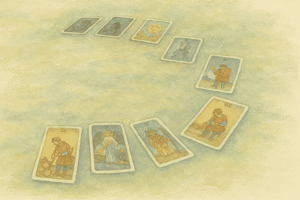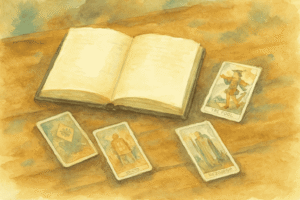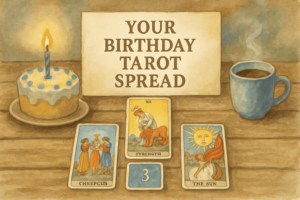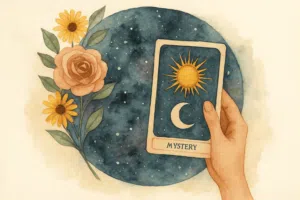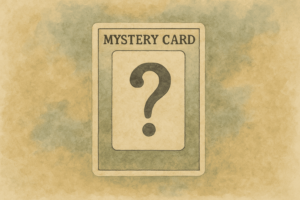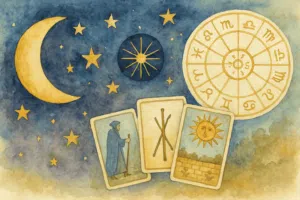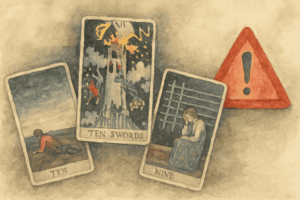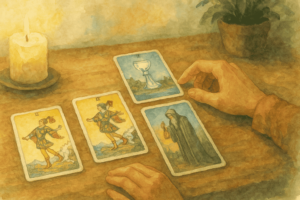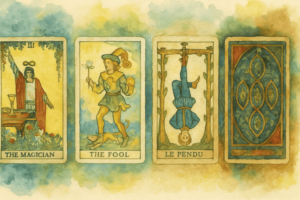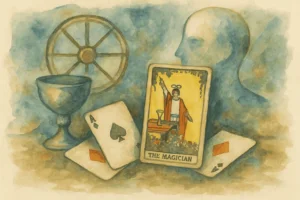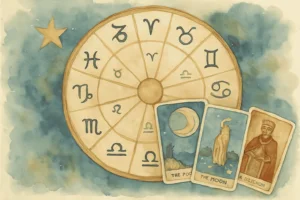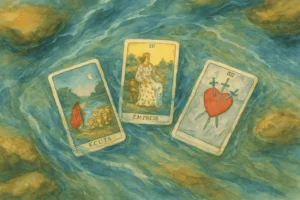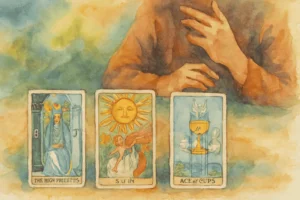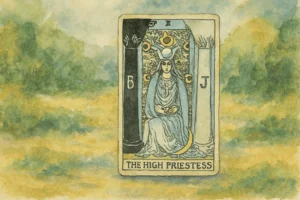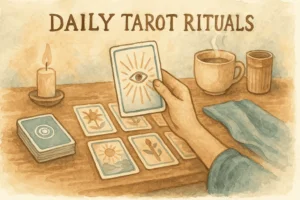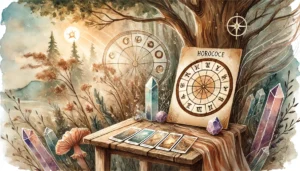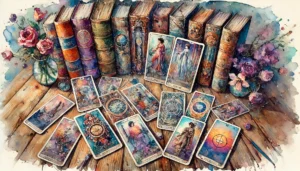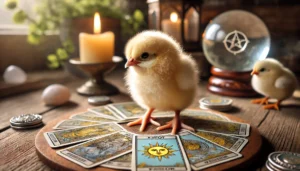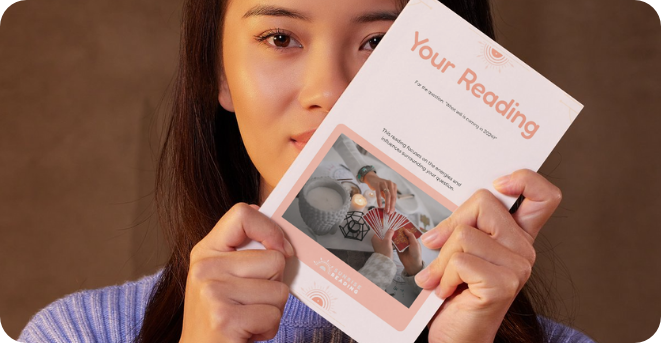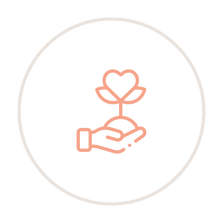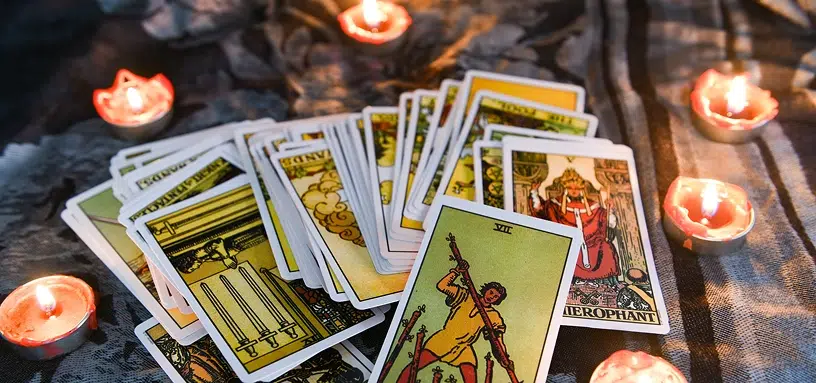[atlasvoice]
Limerence Meaning: Limerence is an intense infatuation with someone, marked by obsessive thoughts and a desire for reciprocation.
Why Limerence and Tarot Can Be a Tricky Combination
When emotions run high, like with limerence, it’s tempting to seek answers everywhere—even in tarot. After a breakup or during an intense infatuation, you may find yourself turning to tarot for reassurance: What is this person thinking? Will we end up together?
While tarot can be a powerful tool for insight, it can also do more harm than good if used in a limerent state. This article is a no-nonsense guide to using tarot responsibly, avoiding obsession, and turning it into a tool for self-growth rather than a crutch for unhealthy fantasies.
1. Can Tarot Feed Your Limerence? Yes, If You’re Not Careful
Understanding Limerence
Limerence is an intense infatuation or obsession with someone, often accompanied by a constant need for validation or reassurance. Every little interaction—or lack thereof—feels monumental, and you find yourself looking for “signs” everywhere.
In this heightened emotional state, tarot can become a way to feed the obsession. Instead of using it for self-reflection, you might look to the cards to confirm what you already hope or fear.
How Tarot Can Fuel Obsession
When you’re limerent, it’s easy to misinterpret tarot readings to align with your desires. If you’re longing for someone to return, every card can feel like a signal that they’re thinking about you or that reconciliation is inevitable. This can trap you in a cycle of false hope and emotional fixation, making it harder to let go.
Confirmation Bias in Limerence
Confirmation bias—the tendency to see what we want to see—plays a huge role here. You might ignore cards or interpretations that suggest moving on and focus solely on the ones that seem to validate your feelings. This makes it harder to gain real clarity and keeps you stuck in an obsessive loop.

2. Using Tarot Mindfully: Avoiding Obsessive Questions
Ask Empowering Questions
To break free from obsession, focus on questions that center on your growth and healing. For example:
-
- “What can I do to heal from this relationship?”
-
- “What am I truly looking for in a partner?”
-
- “How can I build a stronger relationship with myself?”
These questions shift the focus from the other person to your own journey, helping you gain clarity and empowerment.
Avoid Loaded Questions
Questions like, “Are we meant to be?” or “Does this person love me?” are traps. They keep you seeking external validation rather than addressing your own feelings and needs. These types of questions are more likely to feed your limerence than to help you move forward.
Look at Your Intention
Before drawing cards, take a moment to reflect on why you’re consulting tarot. Are you genuinely seeking insight, or are you hoping for reassurance? This pause can help you approach your reading with a clear, grounded mindset.
3. Interpreting Cards Objectively to Avoid Feeding Limerence
Don’t Twist the Meanings
In a limerent state, it’s easy to interpret any card as a sign that your fantasies will come true. For example, The Lovers might seem like confirmation of a romantic reunion, but it could also signify self-love or a choice you need to make. Stick to established meanings rather than bending them to fit your narrative.
Ground Yourself First
Before starting a reading, take a few moments to clear your mind. Breathe deeply, center yourself, and set the intention to approach the cards with honesty and openness. This can help prevent projecting your emotions onto the reading.
Journal Without Judgment
After a reading, write down your interpretations without tying them to your romantic situation. This practice allows you to reflect more objectively and spot patterns over time, rather than feeding into immediate emotional reactions.

4. How to Use Tarot as a Tool for Growth, Not Obsession
Focus on Self-Reflection
Tarot is most effective when it’s used to explore your own emotions, patterns, and desires. Instead of asking what someone else is thinking, ask what you can learn about yourself and how you can grow from the situation.
Embrace the Bigger Picture
Look at tarot as a way to uncover the broader themes in your life. Cards like The Devil or The Hanged Man might point to unhealthy attachments or the need to release control, offering valuable insights for moving forward.
Seek Closure, Not Fantasy
Use tarot to understand what’s keeping you attached to the situation and how you can let go. This might mean reflecting on the lessons the relationship taught you or identifying areas where you need healing.
5. When to Take a Break from Tarot
Signs You’re Overdoing It
If you find yourself doing multiple readings a day, asking the same questions repeatedly, or feeling anxious without consulting tarot, it’s time to step back. Over-reliance on tarot can prevent you from processing your emotions naturally.
Finding Clarity Outside Tarot
Consider other self-care practices, like journaling, meditation, or talking to a trusted friend, to help process your emotions. These practices can complement tarot without feeding obsessive tendencies.
Building Healthy Habits
Create a structured tarot practice, such as a weekly or monthly reading, to ensure you’re using it mindfully. This allows time for reflection and growth between readings.
Conclusion: Tarot as a Tool for Empowerment, Not Fixation
Tarot can be a powerful ally, but only when used responsibly. It’s a tool for self-reflection and growth—not for predicting someone else’s feelings or feeding unhealthy attachments.
By asking empowering questions, interpreting cards objectively, and focusing on your own journey, you can use tarot to gain clarity, heal, and move forward with confidence.
Ready to use tarot mindfully? Try Sunrise Tarot, where our AI-powered readings are designed to guide you toward empowerment and self-discovery—without feeding harmful fantasies.


